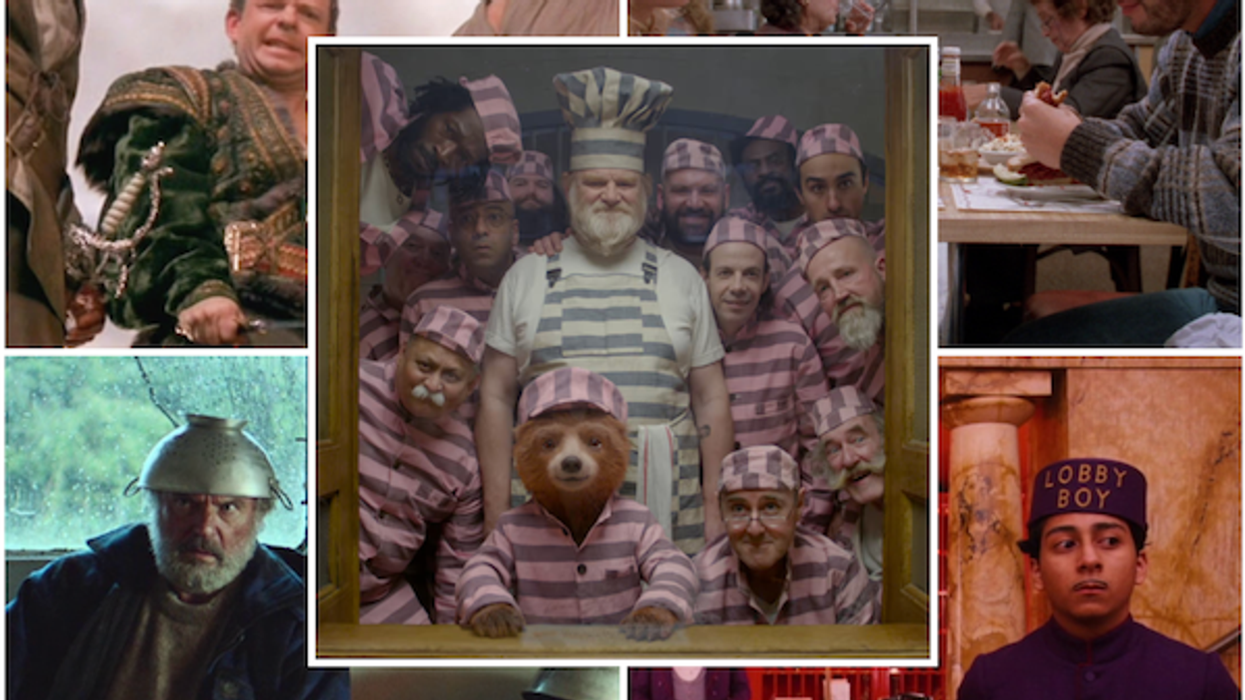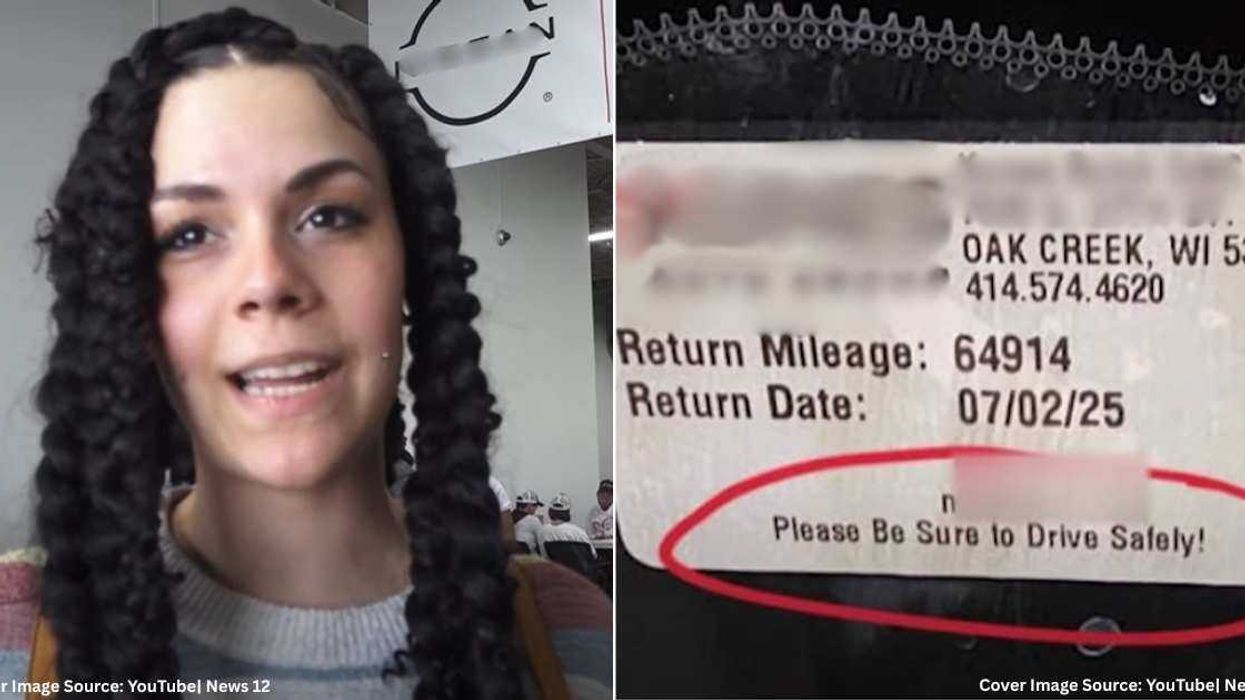Every three months, GOOD releases our quarterly magazine, which examines a given theme through our unique lens. Recent editions have covered topics like the impending global water crisis, the future of transportation, and the amazing rebuilding of New Orleans. This quarter's issue is about cities, spotlighting Los Angeles, and we'll be rolling out a variety of stories all month. You can subscribe to GOOD here.
Los Angeles has no business being a major city. That is to say, through the plain, unforgiving lens of physical geography, there simply isn’t enough water to quench the collective thirst of the roughly 10 million residents of Los Angeles County. If it weren’t for a handful of visionaries who imagined, planned, and built the L.A. Aqueduct—one of mankind’s most incredible civic work projects to date when it was built back in 1913—the Los Angeles we know and love today would never have been.
Though it’s a myth that the city inhabits a desert—technically it’s only a semi-arid region; and Spanish explorers chose to settle there because of the abundance of water and lush vegetation relative to the surrounding area—it didn’t take too long for the city to max out on its local water supply. By the turn of the 20th century, the city’s then 100,000 or so residents were already pushing up against the natural limits of the local water supply. In response, William Mulholland, a young engineer and superintendent of the Los Angeles Department of Water and Power, led projects that frantically built water mains, dug reservoirs, and tamed the once-wild Los Angeles River to tap it for every spare drop. But as the city grew at breakneck speed, Mulholland ran the numbers and foresaw chronic shortages, where even the wettest years would come up 10 percent short of the city’s water needs. When his exhaustive search for any local supply came up dry, Mulholland looked further afield.
An old boss pointed him toward the Sierra Nevadas. Frederick Eaton, the one-time mayor of Los Angeles who had appointed Mulholland as LADWP superintendent, had discovered the Owens River Valley on a camping trip a few years earlier, and brought Mulholland back. The engineer was convinced: The Owens River, gushing out of the Eastern Sierra, would supply Los Angeles with water. That the valley was more than 200 miles from Los Angeles was seen as nothing more than an engineering challenge.
While Eaton, ever the entrepreneur, was buying up land and water rights in the valley (to eventually sell back to the city), Mulholland was developing a plan for a massive aqueduct to usher the water from the foot of the Sierra to the coast. He needed $25 million to build it. The public would have to be convinced, and so he brought Harrison Gray Otis, publisher of the Los Angeles Times, on board to win the hearts and minds of Angelenos. Headlines like “Titanic Project to Give City a River” (July 29, 1905) helped secure a landslide vote to fund the aqueduct with public bonds.
Five years, $22.5 million dollars, 142 tunnels, 43 lives, and 226 miles later, the Los Angeles Aqueduct was complete. At the opening ceremony, Mulholland’s comments were brief: “This rude platform is an altar, and on it we are here consecrating this water supply and dedicating the Aqueduct to you and your children and your children’s children—for all time.”
He then turned to the mayor and said, “There it is. … Take it.”
The water flowed, but the victory was short lived. The city was bursting at the seams. From the 100,000 mark at the turn of the century, Los Angeles tripled in size in a decade, reaching 500,000 by 1920, and topping a million by 1930. Mulholland’s once proud declaration, “Whoever brings the water, brings the people,” started to feel more ominous than optimistic. In the 1920s, the Metropolitan Water District was formed and another, longer, aqueduct was built to bring the Colorado River’s waters to Los Angeles. The city grew. The Mono Basin Project brought more water from even farther away. The city grew. In 1970, a second Los Angeles Aqueduct brought more water.
The city is growing still, and the water continues to arrive from elsewhere: Yet today, roughly 85 percent of the water flowing through Los Angeles’ pipes comes from afar. A mere 15 percent of Los Angeles’ water comes from local groundwater sources.
Whoever brings the water, brings the people.
So what happens if the long straws run dry? The Colorado River hasn’t reached the sea in decades, and a long-standing drought has cut its flows, while higher demand upstream has ended the surplus deliveries that kept that aqueduct full. The Sierra snowpack is expected to shrink by at least 25 percent by mid-century, meaning less meltwater will flow through the aqueducts, and current environmental restrictions have already lessened the amount of water Los Angeles can suck from the Owens Valley and neighboring Mono Basin.
Another massive endeavor, the State Water Project’s California Aqueduct—the biggest, most expensive, and longest of them all—was conceived in the 1960s to transport water more than 400 miles, from the Sacramento Delta down to Southern California, but the project is highly controversial, because of the ecological strain on the Delta and Northern California’s resistance to a water grab, and the SWP struggles to deliver half the water to Southern California that is contracted.
The conflicting trends of population growth and dwindling water supply don’t bode well for the future of this city that is so perilously dependent on funneling in water from afar. Will the true marvels of engineering that made L.A. possible ultimately prove to be its downfall?
Or will new solutions emerge that are as bold as Mulholland’s vision seemed back in 1905.
Take desalination. Large-scale reverse osmosis desalination plants are, right now, actually being built. Australia’s the global leader, and you can be sure that L.A. city officials are looking down the coast at San Diego’s Poseidon plant, which is promising to drink from the sea and deliver 50 million gallons of freshwater every day to the city of San Diego, a drought-proof supply for a population of about 300,000.
Another option being explored is a “groundwater replenishment system.” That’s the polite term for taking wastewater (yes, that which once flowed through a sewer) and purifying it using a combination of fancy, expensive processes like reverse osmosis, microfiltration, ultraviolet light, and hydrogen peroxide disinfection. It’s happening now, awfully close to Los Angeles. A couple years ago the Orange County Water District opened the world’s largest such wastewater recycling plant. In fact, if you’ve visited Disneyland recently and sipped from a water fountain, you’ve already drunk this “toilet-to-tap” water.
Of course, good old-fashioned conservation has a role to play as well. Command-and-control measures have already been implemented: Angelenos should get used to higher water rates in shortage years and restrictions on some uses like watering lawns or washing cars. Rebate programs can also help residents save on more water-efficient appliances, and conservation kits (with simple water-saving devices like low-flow showerheads and faucet aerators) are available from LADWP for free.
But even the most widespread civic conservation efforts are going to butt up against the hard physical and natural realities. Can a city of 10 million keep growing if the most elemental of human needs is in short supply? Mulholland might’ve warned: Whoever loses the water, loses the people.















 A grieving couple comforts each otherCanva
A grieving couple comforts each otherCanva A couple welcomes a newborn baby at the hospitalCanva
A couple welcomes a newborn baby at the hospitalCanva A nurse tends to a young babyCanva
A nurse tends to a young babyCanva
 A woman makes a list on her cell phone on the sidewalkCanva
A woman makes a list on her cell phone on the sidewalkCanva  A smiling woman types on her phoneCanva
A smiling woman types on her phoneCanva 
 Representative Image: The emotional damage of racism is hard to overstate.
Representative Image: The emotional damage of racism is hard to overstate. 


 Representative Image: She helped deliver her baby brother. Photo credit: Canva
Representative Image: She helped deliver her baby brother. Photo credit: Canva  Representative Image: Every birth story is unique.Photo credit: Canva
Representative Image: Every birth story is unique.Photo credit: Canva 
 Gif of Emma Stone crying via
Gif of Emma Stone crying via  A woman comforts an older manCanva
A woman comforts an older manCanva
You may have missed the actual meaning behind these 5 popular songs.
'Every breath you ...' what? 5 classic songs where people totally missed the meaning
I’ve never been a "lyrics guy"—as long as the words sound pleasing to the ear, are relatively interesting, and aren’t evil or distractingly dumb, I don’t care all that much what the singer is going on about. I’m focused on the dynamics, the color of the arrangements, the rhythms, and harmonies. It’s only natural that I’d misinterpret some songs over the years, including ones that I’ve heard a thousand times while walking around malls and supermarkets.
I know I’m not alone. And I’d argue there are plenty of factors behind this phenomenon: Some people take lyrics too literally, while others only focus on hooky choruses and fail to notice nuance in the verses. Context can also blind us—if the music is danceable and upbeat, you might fail to catch darker elements in the words. Still, it can be hilarious and/or shocking when hugely popular tunes are misinterpreted on a mass scale.
Speaking of which: Let’s consult a viral Reddit thread titled "Any songs that are (or were) misunderstood by the public?" There's a mountain of suggestions—everything from '90s Latin-pop hits to '80s heartland-rock epics. But five of them felt especially perfect, so let’s dig a little deeper below.
- YouTube www.youtube.com
The Police - "Every Breath You Take" (1983)
As someone argues in the comments, "Pointing out the real meaning behind 'Every Breath You Take' has to have become so commonplace that it can't really be misunderstood anymore." Point taken. But still…this eerie Police track continues to be used in pop culture and everyday life as a signifier of romance—appearing as the soundtrack to TV slow dances and being arranged for weddings by string quartets. It’s easy to assume, at first glance anyway, that the song's protagonist is pledging their devotion—sticking around for "every breath" their partner takes. Instead, the atmosphere is more disturbing, given the whole "I’ll be watching you" thing. "I didn't realize at the time [I wrote it] how sinister it is," Sting told The Independent in 1993. "I think I was thinking of Big Brother, surveillance, and control."
- YouTube www.youtube.com
Bruce Springsteen - "Born in the U.S.A." (1984)
"Born in the U.S.A." is one of Bruce Springsteen's signature songs—but also likely his most misinterpreted. As an official explainer video notes, the words "center around America's industrial decline and loss of innocence during the Vietnam War"—a message that became somewhat diluted as politicians began using the stadium-sized track for their campaigns. "Conservative commenters praised the song, and it earned the approval of both candidates in the 1984 presidential election," the clip's narrator adds. "Despite being adopted as a patriotic anthem, 'Born in the U.S.A.' is far from nationalistic." In a deep-dive piece, NPR quotes Springsteen talking about the song on stage: "'After it came out, I read all over the place that nobody knew what it was about,' he said before performing 'Born in the U.S.A' to a crowd in 1995. 'I'm sure that everybody here tonight understood it."
- YouTube www.youtube.com
Los Del Rio - "Macarena" (Bayside Boys remix) (1995)
Most Americans probably know the bubbly Bayside Boys remix of Los Del Rio's Spanish-language hit—it became the marquee moment of many a mid-'90s wedding reception and middle-school dance, thanks to its once-ubiquitous choreography. Maybe it's because people were too distracted by remembering the dance moves, but lots of us didn’t notice the lyrics. Of course, the chorus is in Spanish, which could have been a barrier for some, but the remix features English lines like the following: "Now don't you worry about my boyfriend / The boy whose name is Vitorino / Ha! I don't want him, can't stand him / He was no good so I, ha ha ha / Now come on, what was I supposed to do? / He was out of town, and his two friends were so fine."
"My little teenage mind was blown when I learned 'Macarena' was about cheating on a boyfriend with his friends," one Redditor wrote. "[Thank you] for the correction, it was 2 friends! Was sleep deprived writing this. I just did the moves, never questioned the lyrics." Yeah, gotta admit—this legitimately never crossed my mind either. Same with some of the people who took part in a reaction video for Distracify: "It’s definitely about dancing," one person said, before learning the truth. Another added, "I have no idea what it’s about still to this day. Please tell me it’s not something really dark."
- YouTube www.youtube.com
Baha Men - "Who Let the Dogs Out" (2000)
The party was nice. The party was pumpin'.' Until, that is, some "flea-infested mongrels" got involved. Back in 2000, you couldn't escape Baha Men's booming cover of "Who Let the Dogs Out"—it became a staple of sporting events everywhere, a kind of bookend for the Jock Jams era. "I know I definitely misunderstood 'Who Let the Dogs Out' to be about actual dogs," one Redditor wrote, likely speaking for most of the listening public. There's probably a good chance most of those people chanting the chorus weren't thinking about the song's real meaning, crafted by Trinidadian artist Anslem Douglas for his 1998 original. But if you pay attention to the lyrics, "Who Let the Dogs Out" has a feminist theme, telling the story of women who stand up against crass catcalling. "This is going to be a revenge song where a woman tells men, 'Get away from me—you're a dog,'" Douglas told Vice in a 2021 video history of the track. "[Offensive] slang was everywhere. It was just degrading women and calling them all sorts of derogatory names. I tried to do a social commentary as a party song, but the party song overshadowed the social commentary aspect of it."
- YouTube www.youtube.com
Hozier - "Take Me to Church" (2013)
One section of the Reddit thread is devoted to songs interpreted as pro-religion, when the truth is... well, more complicated. "'Take Me to Church' by Hozier is often used by Churches for things, and I’m like 'Oh, that’s not…,'" wrote one user. The bluesy, slow-burning ballad may use religious imagery. Still, it's about something more human—"[It's] this idea that powerful organizations use people’s sexuality in order to mobilize people against women, against gay people," the Irish songwriter told Genius in 2023. "And the justification behind that is often religious in nature." Hozier even isolated one particular lyric that highlights this misconception: "'She tells me, ‘Worship in the bedroom' [is] something tongue-and-cheek, a bit of humor to it, also revealing that this is not necessarily a traditional worship song," he said. "I think I still see my name put into playlists for Christian music, and I’m not averse to that—I don’t think the two are necessarily mutually exclusive. But that line I would’ve thought would’ve disqualified it from something like that."